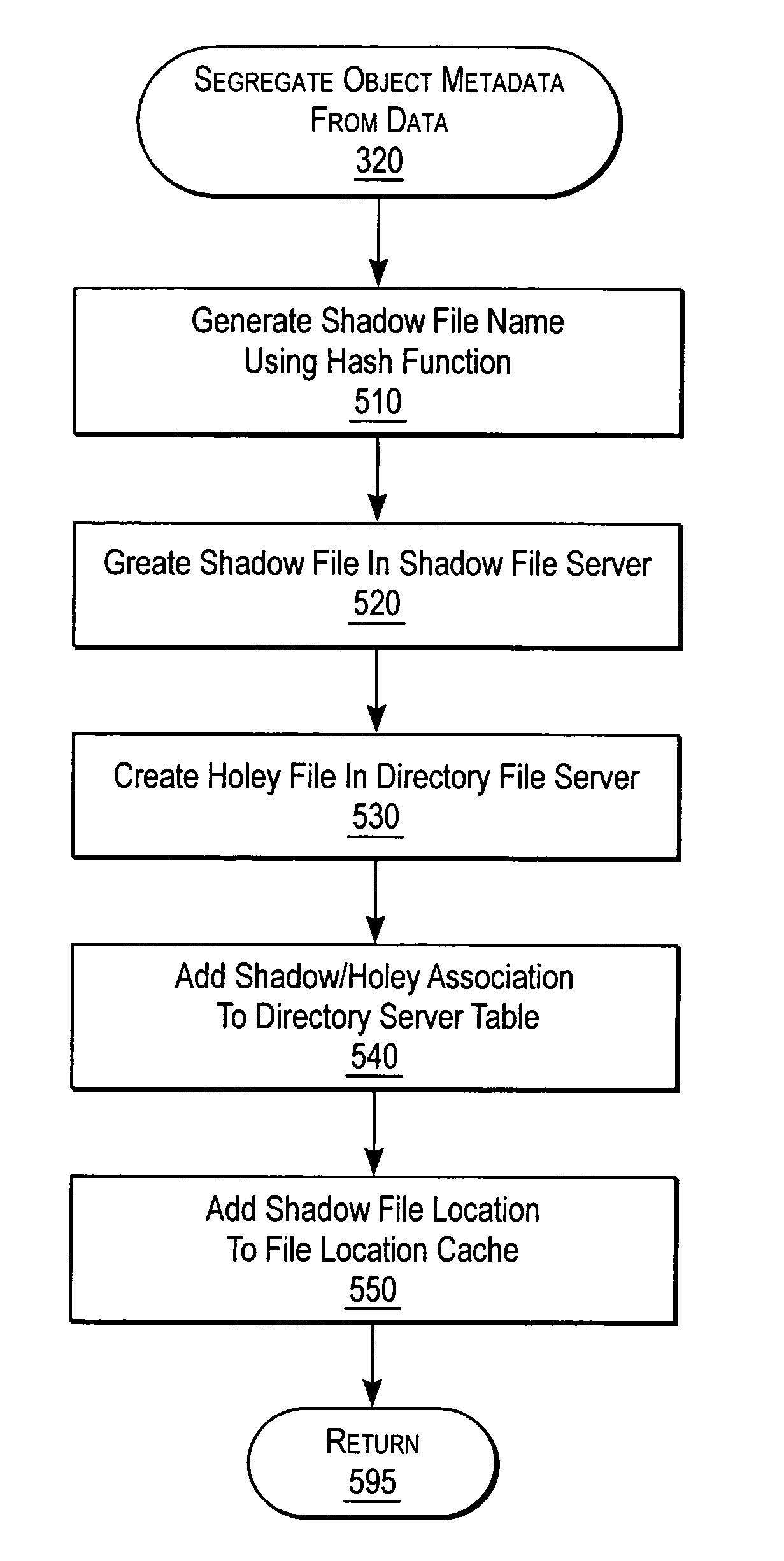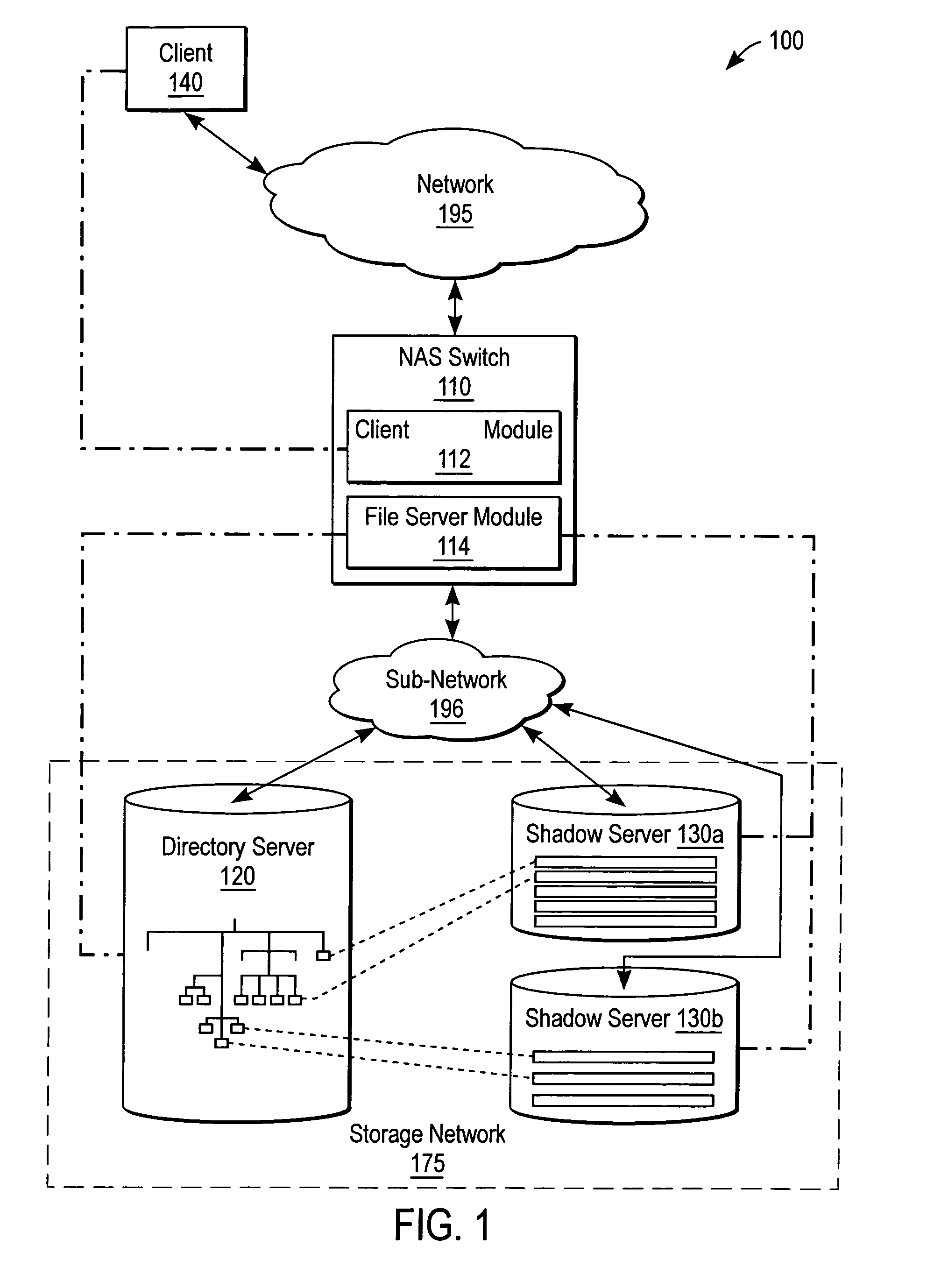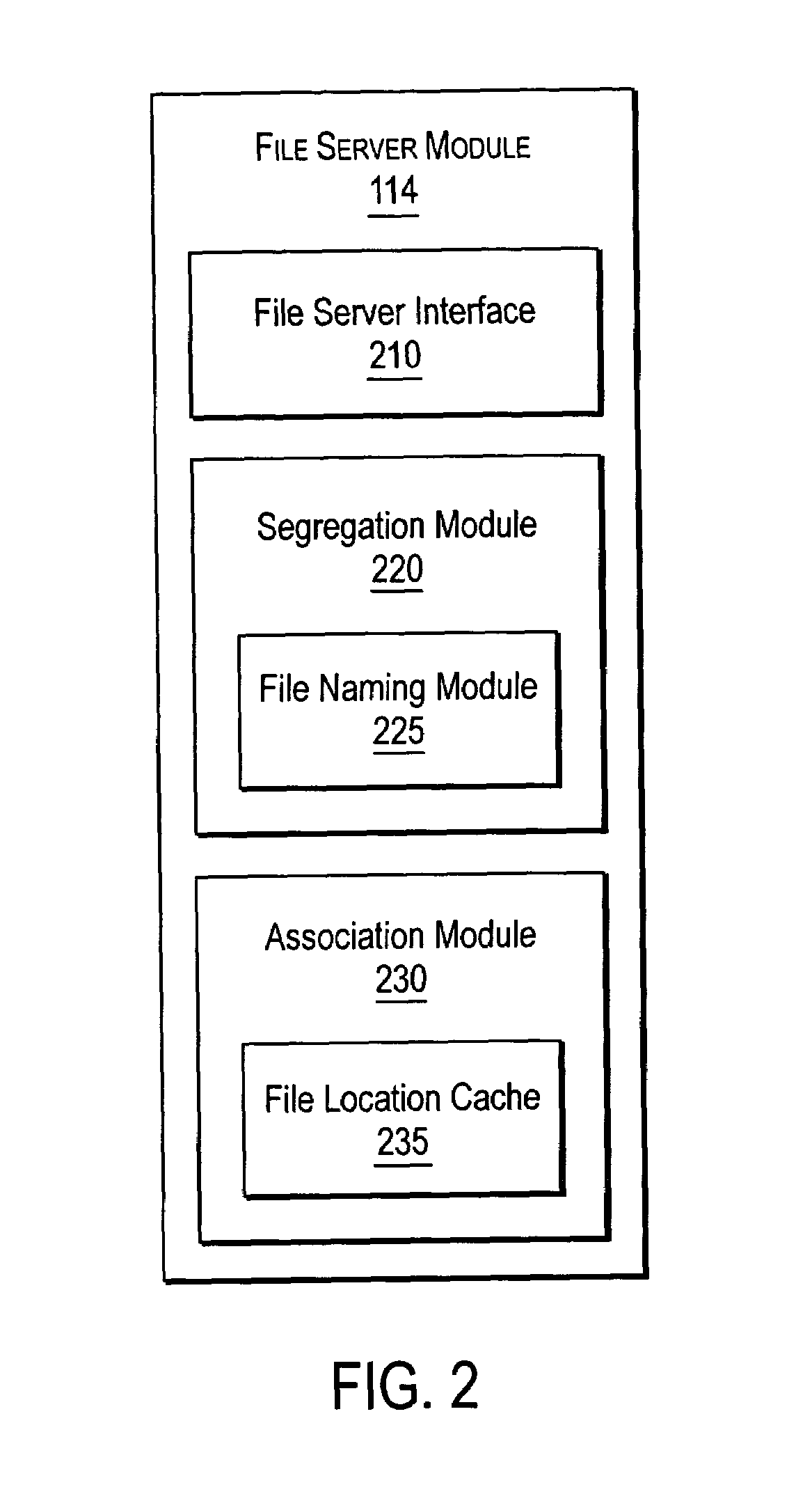Extended storage capacity for a network file server
a file server and network file technology, applied in the field of storage networks, can solve the problems of no centralized control, more expensive and powerful san (storage area network) file server use, and the disadvantages of nas storage networks over san storage networks
- Summary
- Abstract
- Description
- Claims
- Application Information
AI Technical Summary
Benefits of technology
Problems solved by technology
Method used
Image
Examples
Embodiment Construction
[0021]The present invention provides extended storage capacity for a network file server. A NAS (Network Attached Storage) switch in the data path of a client and NAS file servers on the storage network, stores directory metadata separately from associated data to extend the storage capacity of a directory file server. Some embodiments of a system are described with respect to FIGS. 1–2, and some embodiments of a method operating therein are described with respect to FIGS. 3–6.
[0022]The accompanying description is for the purpose of providing a thorough explanation with numerous specific details. Of course, the field of storage networking is such that many different variations of the illustrated and described features of the invention are possible. Those skilled in the art will thus undoubtedly appreciate that the invention can be practiced without some specific details described below, and indeed will see that many other variations and embodiments of the invention can be practiced ...
PUM
 Login to View More
Login to View More Abstract
Description
Claims
Application Information
 Login to View More
Login to View More - R&D
- Intellectual Property
- Life Sciences
- Materials
- Tech Scout
- Unparalleled Data Quality
- Higher Quality Content
- 60% Fewer Hallucinations
Browse by: Latest US Patents, China's latest patents, Technical Efficacy Thesaurus, Application Domain, Technology Topic, Popular Technical Reports.
© 2025 PatSnap. All rights reserved.Legal|Privacy policy|Modern Slavery Act Transparency Statement|Sitemap|About US| Contact US: help@patsnap.com



